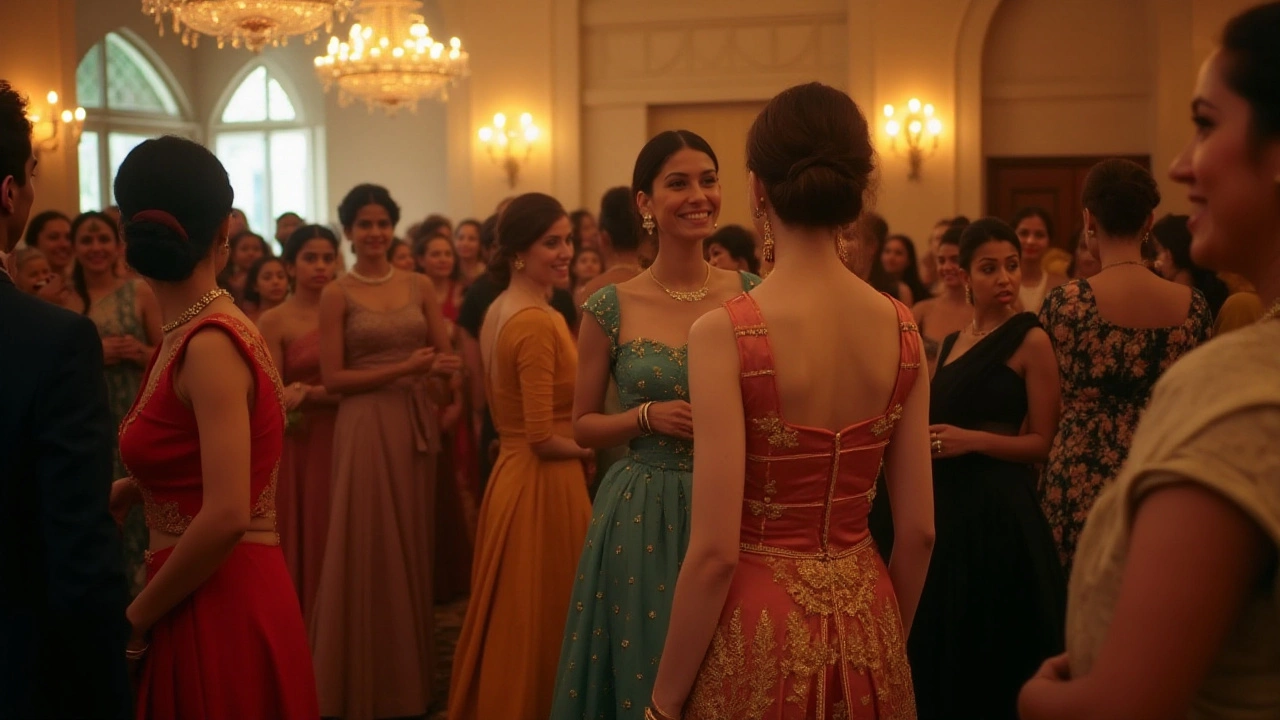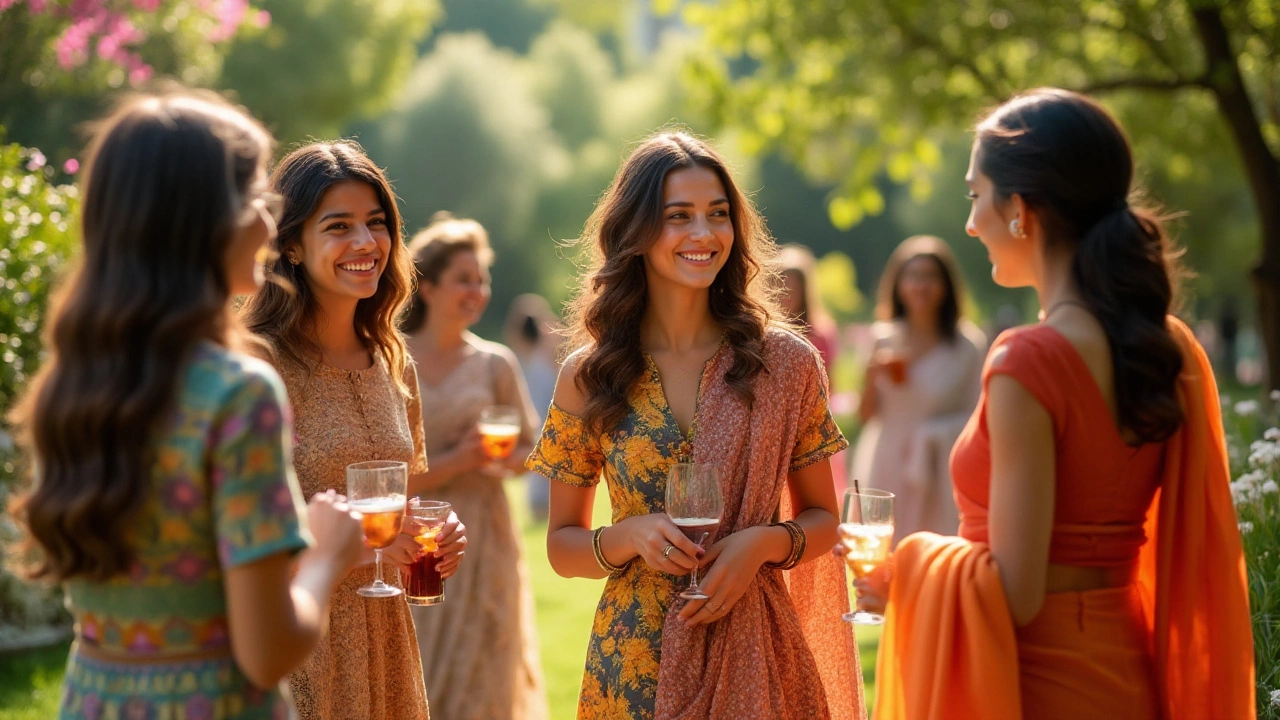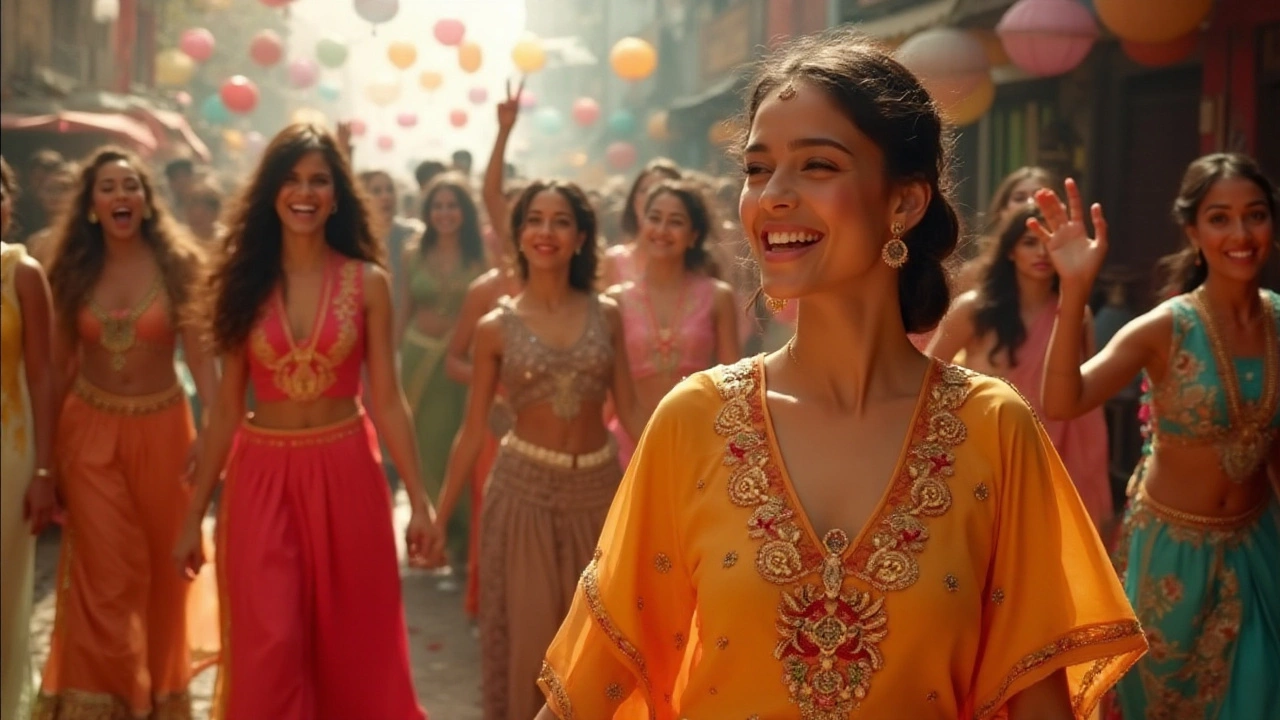The world of fashion is a tapestry woven with various styles and designs, each serving its own unique purpose. Among these multifaceted styles are the beloved cocktail and evening dresses. While both are staples in any fashion-forward wardrobe, they invariably serve different roles and embody distinct aesthetics in the realm of social gatherings and functions.
Diving into the world of cocktail dresses, we discover a garment that is versatile, often featuring a shorter hemline which speaks to a mood of casual elegance. Ideal for semi-formal events, cocktail dresses are a celebration of style with a touch of playful sophistication. On the other hand, evening dresses are often synonymous with formality and grandeur, marked by flowing hems and luxurious fabrics, suitable for black-tie events where glamour reigns supreme.
- The Essence of Cocktail Dresses
- Defining Evening Dresses
- Key Differences Between Cocktail and Evening Dresses
- Occasions Each Dress Style Suits Best
- Style Tips and Interesting Facts
The Essence of Cocktail Dresses
Cocktail dresses have long been a symbol of effortless style in the landscape of fashion. Emerging during the 1920s, these dresses were initially designed for early evening events referred to as cocktail parties—hence the name. Since then, the cocktail dress has evolved, but its core purpose remains the same: to offer a chic, stylish option for semi-formal occasions where wearing a full-fledged gown might be too much, yet a casual outfit wouldn't suffice.
Versatility is a hallmark of the cocktail dress. It typically features a hemline that falls somewhere between mid-thigh and just above the knee, striking a balance between daring and demure. This length allows ease of movement, making it ideal for events that require some mingling and dancing. The materials used for these dresses range widely, including lightweight chiffons, silks, and satins, each lending its own touch of personality and flair.
Interestingly, the classic ‘little black dress’ is essentially a cocktail dress, first popularized by the legendary Coco Chanel in the 1920s. This timeless piece underscores how a well-designed cocktail dress can become an iconic part of fashion history. The adaptability of these dresses means they can be accessorized in numerous ways, allowing wearers to express individual style. Bold statement jewelry, elegant clutches, or even a unique pair of shoes can transform the same dress into multiple distinct looks.
One notable fashion expert, Edith Head, famously said,
"You can have anything you want in life if you dress for it."Head's insight suggests that clothing isn't merely about covering oneself but an essential part of making a statement, which is precisely what the cocktail dress achieves. Whether sleek and simple or festooned with intricate embellishments, each dress speaks volumes about the wearer’s style and confidence.
While the cocktail dress might traditionally align with an evening gathering, it’s not confined to such events. Many opt for these dresses for daytime social events, such as weddings or celebratory lunches, especially when the invite suggests semi-formal attire. The range of styles available—from strapless and halter necks to sleeves and asymmetrical designs—offers enough variety to suit any personal preference or body type.
For over a century, the cocktail dress has remained an integral element of fashion’s ever-evolving narrative. Its allure lies in the delicate balance it strikes between elegance and accessibility, making it a staple piece that can adapt to both past and contemporary fashion trends effortlessly. A true representation of classic beauty, the cocktail dress endures, proving that style can truly have no expiration date.
Defining Evening Dresses
Evening dresses have long been synonymous with magnificent elegance and timeless beauty. These gowns are the epitome of sophistication, often reserved for the grandest occasions. An evening dress usually features luxurious fabrics such as satin, velvet, chiffon, or tulle. The design often includes intricate detailing, be it in the form of hand-sewn embellishments, delicate lace overlays, or subtle beading that catches the light beautifully. Many evening dresses also incorporate exquisite features like plunging necklines, open backs, or high slits that add a sense of allure and femininity to the silhouette.
Beyond mere aesthetics, an evening dress carries with it a sense of tradition and occasion. These dresses are typically floor-length, although variations like tea-length gowns have grown in popularity due to their nostalgic appeal. The flowing hems of an evening gown create a sense of grandeur, often making the wearer seem to glide across the floor. According to fashion historian Jane Sumerset, "The evening dress transcends time, offering a glimpse into eras past while staying relevant in modern couture."
The elegance of an evening dress is not just in its length but in how it allows every woman to feel special and celebrated, often embodying the apex of her personal style.
While specific styles evolve with fashion trends, evening dresses adhere to a foundational principle of opulence and formality appropriate for events such as galas, operas, or formal weddings. They are a testament to the notion of dressing up for an occasion, fostering a sense of anticipation and excitement. Designers often spend countless hours crafting the perfect evening dress, mindful of both traditional expectations and modern trends. This dynamic nature is reflected in unusual silhouettes or the incorporation of contemporary materials, yet without sacrificing the elegance that defines them.
Evening dresses are not just garments; they are statements. They signal that an event is significant, demanding respect and admiration from onlookers. The Eurovision Song Contest is a fitting example, where each participating artist dons the most splendid evening gowns to make an impression on a global stage. Whether adorned with sequins or crafted with clean lines and luxurious fabric, the evening dress asserts its role as a mainstay in the landscape of formalwear, effortlessly bridging tradition and innovation.

Key Differences Between Cocktail and Evening Dresses
In the realm of women’s fashion, distinguishing between a cocktail dress and an evening dress is crucial for choosing the appropriate attire for various occasions. Cocktail dresses are characterized by their playful yet sophisticated appeal, commonly designed with hemlines that hover at knee-length or slightly above. These dresses embrace a lighter touch, often incorporating vibrant colors and playful patterns to match the semi-formal nature of events like cocktail parties and upscale gatherings. Meanwhile, evening dresses capture an aura of elegance and are typically crafted with long lengths that skim the floor, often in darker hues which lend a sophisticated edge to formal occasions like galas or black-tie events.
The materials used in these dresses showcase another layer of distinction. Cocktail dresses tend to utilize versatile fabrics such as satin, chiffon, and lace, which are suitable for achieving a balance between simplicity and style. These fabrics offer comfort and a playful texture that align with the cocktail dress ethos. Conversely, evening dresses frequently employ luxurious materials such as silk, taffeta, or velvet, contributing to their opulent allure that stands out in candlelit banquets and red carpet occasions. The luxurious fabrics not only enhance the dress's beauty but also reflect the grandeur of the settings they're intended for.
Design elements also play a significant role in differentiating these two styles. Cocktail dresses often highlight modern, trend-forward cuts and embellishments, featuring a variety of necklines, sleeve lengths, and details that can emphasize personal expression and current fashion trends. Evening dresses, however, usually favor timeless silhouettes and understated refinement, focusing on elegance through classic cuts that never go out of style and minimalistic embellishments that enhance rather than overshadow the wearer's natural grace.
While some may perceive these differences as subtle, they play a critical role in demarcating the place each dress holds in a fashion-conscious woman's wardrobe. The functionality of cocktail and evening dresses is tailored to their respective settings and occasions, ensuring the wearer looks and feels appropriate, confident, and beautifully in sync with the level of formality required by the event. A graceful mastery of these differences can elevate personal style and fulfill the sartorial demands of any social calendar. As the iconic fashion designer, Yves Saint Laurent once said,
"Fashions fade, style is eternal."Understanding these nuanced differences empowers women to embody timeless elegance regardless of the trends swirling around them.
Occasions Each Dress Style Suits Best
When it comes to deciding between a cocktail dress and an evening dress, the choice often hinges on the nature of the event. Each dress type serves its own function in the world of social gatherings, lending its unique charm to the occasion. A cocktail dress is your perfect ally when attending events that exude an energetic and lively atmosphere, such as cocktail parties, wedding receptions, or perhaps a fashionable dinner date. These events often call for attire that combines a sense of comfort with a fashionable edge, which makes a cocktail dress—often characterized by its shorter length and playful designs—a fitting choice.
On the other hand, evening dresses are the quintessential choice for events that demand a higher degree of formality and elegance. Black-tie galas, opera nights, and grand weddings are the sorts of events where an evening dress shines. These dresses, typically adorned with long hemlines and exquisite fabrics, lend themselves to a sense of allure and magnetism. It’s not unusual for an evening dress to tell a story of luxury, blending with the ambiance of the event with resplendent sophistication. "Fashion is about dressing according to what's fashionable. Style is more about being yourself," notes fashion designer Oscar de la Renta, highlighting the importance of choosing a dress that complements both the event and personal style.
In some cases, specific details of the invitation may offer cues as to which dress style is most appropriate. Words such as "formal attire," "black-tie optional," or "semiformal" can guide the decision-making process, subtly suggesting the expected degree of sophistication. Guests at a black-tie affair are usually expected to dress in evening gowns, while cocktail parties provide more latitude in style, allowing fashion choices that embrace color, shorter hemlines, and less conventional designs.
To provide more clarity, consider the following tips and guidelines when deciding what to wear:
- Time of Day: Evening dresses are generally reserved for events starting after 6 PM, while cocktail dresses can be worn for late afternoon and evening events.
- Venue: An upscale venue may signal the need for an evening dress, whereas a more casual location might warrant a flirty cocktail dress.
- Invitation Wording: Pay attention to the dress code hinted at in the invitation, as this can offer valuable insights into appropriate attire.
- Season: Consider the season, as it can influence fabric choice—a breezy chiffon cocktail dress for summer versus a velvet evening gown for winter.
Ultimately, the occasion itself dictates the appropriate dress style. Whether choosing a cocktail dress or an evening dress, it’s about striking a harmonious balance between the formality of the event and personal expression. Understanding this nuanced dance of fashion choices not only refines elegance but also enhances confidence, ensuring an impeccable presence at any event.

Style Tips and Interesting Facts
When it comes to enhancing your wardrobe with both a cocktail dress and an evening dress, there are nuanced style tips to consider that can elevate your fashion game. For cocktail dresses, experimenting with bright colors and bold patterns can bring out a youthful charm. These dresses are the perfect canvas to showcase standout accessories such as statement earrings or a quirky clutch. Meanwhile, the length of these dresses allows for a variety of footwear options, from elegant heels to stylish ankle boots, giving you the freedom to tailor your look to the occasion.
On the flip side, evening dresses often call for a subtler approach. Crafted with luxurious fabrics like satin or chiffon, these dresses are all about elegance. The silhouette should speak volumes without shouting, often utilizing darker hues and minimalistic designs that radiate sophistication. Pairing an evening dress with classic pearls or a modest diamond necklace can add just the right amount of shine. These dresses, typically sweeping the floor, are best complemented by sleek heels that add to the grace of the ensemble.
Mondains know that the history of these dress styles offers fascinating insights. The cocktail dress emerged in the post-war era as a symbol of newfound freedom and stylish opportunity, while evening dresses have been the epitome of culinary society elegance since as early as the 15th century. Oscar Wilde, the legendary wordsmith, once remarked in a bout of whimsy,
"Fashion is a form of ugliness so intolerable that we have to alter it every six months."His words remind us of fashion's ever-evolving nature, yet also of the timeless quality that cocktail and evening dresses have maintained.
Practically speaking, knowing when to choose a cocktail versus an evening dress can save you a sartorial headache. A handy tip is to consider if the event is predominantly social with standing, like art gallery openings or cocktail parties, where a cocktail dress will shine. If the affair is more formal and involves a sit-down dinner or a ballroom setting, an evening dress is the way to go. Investing in the right undergarments also plays a crucial role; shapewear can create seamless lines crucial for both types of dresses.
An interesting fact many might not know involves the invention of the cocktail dress itself. Its roots, quite literally, lie in the cocktails being served in the 1920s, a favored leisure activity at the time. This dress style was born to complement the essence of these gatherings, a staple of chic informality made to suit the zeitgeist perfectly. Today, both cocktail and evening dresses have transcended their original designations, becoming versatile must-haves.

